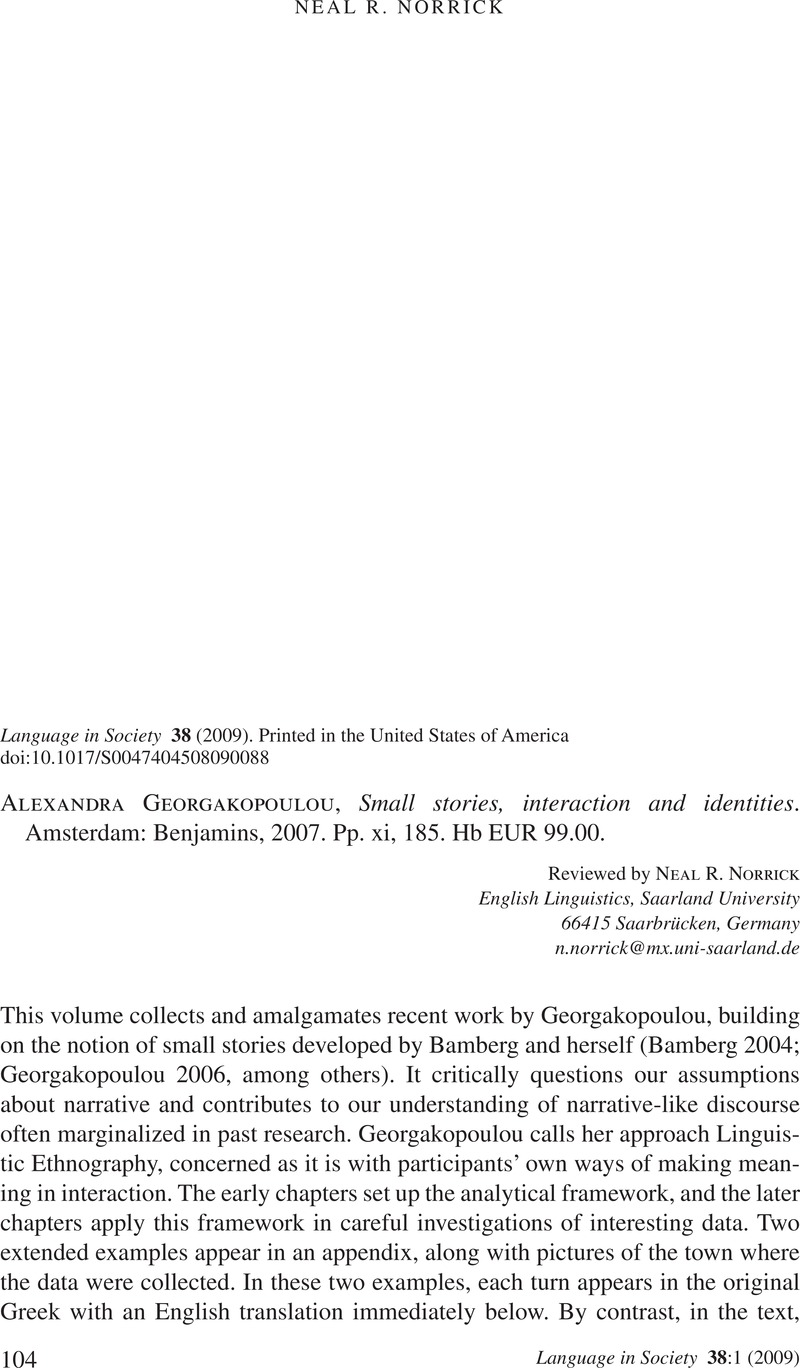Crossref Citations
This article has been cited by the following publications. This list is generated based on data provided by Crossref.
Stapleton, Karyn
and
Wilson, John
2017.
Telling the story: Meaning making in a community narrative.
Journal of Pragmatics,
Vol. 108,
Issue. ,
p.
60.
Bechaz, Alan
Sexton, Adrienne
Gill, Gulvir
and
Karidakis, Maria
2024.
How do women talk about self‐funded breast cancer genetic testing?: Small stories and stance‐taking strategies.
Journal of Genetic Counseling,
Vol. 33,
Issue. 4,
p.
906.



